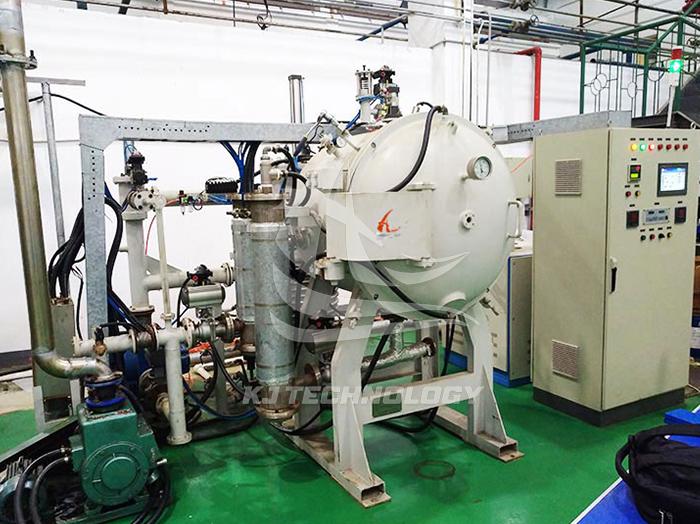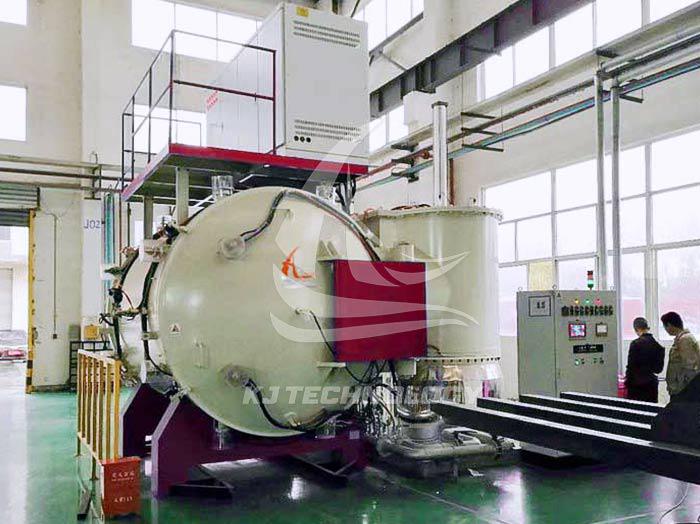What are the precautions for using a high vacuum muffle furnace?
 06-10-2025 Author: KJ technology
06-10-2025 Author: KJ technology
During the use of a high vacuum muffle furnace, in order to ensure equipment safety, experimental effectiveness, and personnel health, the following precautions should be taken:
1. Preparation before operation
Equipment inspection
Appearance inspection: Confirm that the furnace body is not damaged, deformed, or cracked, the furnace door is well sealed, and there is no air leakage.
Vacuum system inspection: Check whether the vacuum pump, valves, pipelines and other components are normal to ensure that the vacuum degree meets the experimental requirements.
Electrical system inspection: Check whether the power cord, plug, socket, etc. are intact, ensure good grounding, and prevent leakage.
Sample preparation
Sample cleaning: Ensure that the surface of the sample is free of impurities such as oil stains and dust, and avoid generating harmful gases or contaminating the furnace at high temperatures.
Sample size: Select the appropriate sample based on the furnace size to avoid the sample being too large or too small, which may affect the heating effect or damage the equipment.
Environmental preparation
Good ventilation: Ensure good ventilation in the laboratory to avoid the accumulation of harmful gases indoors.
Keep away from flammable materials: The area around the muffle furnace should be kept away from flammable and explosive materials to ensure safety.
2. During the operation process
temperature control
Set a reasonable temperature: Set a reasonable heating rate and insulation temperature according to the experimental requirements to avoid excessive or insufficient temperature affecting the experimental results.
Monitor temperature changes: closely monitor temperature changes to ensure that the temperature is controlled within the set range. If abnormal temperature is found, heating should be stopped immediately and the cause checked.
Vacuum degree control
Vacuuming operation: Before heating, the furnace should be evacuated to ensure that the vacuum level meets the experimental requirements. During the vacuum pumping process, close attention should be paid to changes in vacuum degree to avoid insufficient or excessive vacuum degree.
Maintain vacuum degree: During the heating process, the vacuum degree inside the furnace should be kept stable to avoid affecting the experimental results due to fluctuations in vacuum degree.
safe operation
Wear protective equipment: Operators should wear protective gloves, goggles, and other protective equipment to avoid burns or splashes.
Avoid direct contact: During the heating process, direct contact with the furnace body or sample should be avoided to prevent burns.
Prohibition of illegal operations: It is strictly prohibited to place flammable and explosive materials or engage in illegal operations inside the furnace to ensure safety.
3. Post operation maintenance
Cooling treatment
Natural cooling: After the experiment, the muffle furnace should be allowed to cool naturally to room temperature to avoid rapid cooling that may cause cracking or damage to the furnace.
Power off: During the cooling process, the power should be turned off to avoid damage caused by prolonged operation of the equipment.
Cleaning and maintenance
Cleaning the furnace: After the furnace cools down, the residue inside the furnace should be cleaned in a timely manner to keep the furnace clean.
Check components: Regularly inspect vacuum pumps, valves, pipelines, and other components for normal operation, and replace them promptly if damaged.
Recording and archiving
Record experimental data: During the experimental process, detailed records of temperature, vacuum degree, time, and other experimental data should be kept for subsequent analysis and summary.
Archive experimental report: After the experiment is completed, an experimental report should be written and archived for future reference and reference.
4. Other precautions
Regular calibration: Regularly calibrate the temperature, vacuum degree, and other parameters of the muffle furnace to ensure equipment accuracy and precision.
Training operators: Provide professional training to operators to familiarize them with equipment performance, operating procedures, and safety precautions.
Develop emergency plans: Develop emergency plans to clarify response measures and escape routes in case of equipment failure, fire, and other emergencies.








